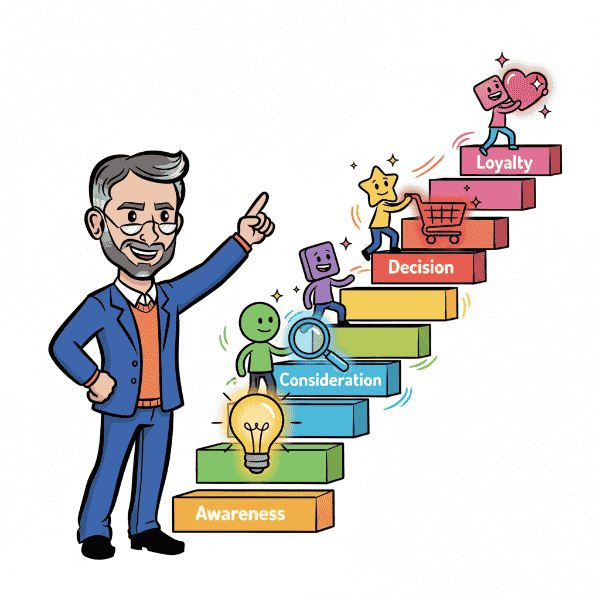Definition: A content strategy framework is a structured plan that aligns messaging with business goals, ensures consistency across channels, and provides a clear roadmap for what content to create, when, and why. Instead of chasing trends or creating content impulsively, this framework helps brands produce purposeful content that drives traffic, engagement, and conversions over time.
Use it in a Sentence: The startup developed a content strategy framework to align its marketing with audience needs, resulting in consistent messaging and measurable growth across all channels.
Benefits of an Effective Content Strategy Framework

- Aligned Business Goals: Every blog post, video, or social update serves a purpose—whether it’s driving leads, educating users, or nurturing customers through the funnel.
- Improved Efficiency: With a framework in place, teams spend less time brainstorming and more time executing content that moves the needle.
- Consistent Messaging: Maintain a unified tone of voice and brand narrative across platforms, from social media to sales pages.
- Smarter SEO Planning: A good content strategy framework integrates keyword research and topic clusters from the start, making it easier to rank and stay visible.
- Data-Driven Decisions: A framework lets you plan, track, and refine your content based on actual performance—not hunches.
Key Elements of a Content Strategy Framework
- Audience Definition: Start by understanding who you’re speaking to. Build audience personas that detail demographics, pain points, behaviors, and content preferences.
- Content Goals: Tie content back to business KPIs—whether it’s increasing traffic, generating leads, supporting customer success, or growing brand awareness.
- Messaging Pillars: Define your core topics and content categories. These should support your brand narrative while addressing audience needs and search intent.
- Content Formats & Channels: Decide how your message will be delivered—blogs, videos, infographics, newsletters—and where it will live (website, YouTube, LinkedIn, etc.).
- Editorial Calendar: Create a living roadmap of what content will be published, when, and by whom. This ensures consistency and accountability across the team.
- SEO Integration: Weave SEO into every stage. That includes keyword mapping, internal linking structures, metadata, and performance tracking tied to your content strategy framework.
- Distribution Plan: Plan how each piece will be promoted—organic, paid, or email distribution. Good content can’t perform if no one sees it.
- Performance Metrics: Track performance using metrics like page views, bounce rate, time on page, conversions, and keyword rankings. Use this data to refine the framework regularly.
More Definitions
(From the Sales & Marketing Jargon Encyclopedia)
- Custom Landing Pages are standalone web pages tailored to a specific audience or campaign, designed to drive a single focused action like sign-ups or sales.
Read More> - Link Juice: The SEO value or authority passed through hyperlinks to boost search rankings.
Read More> - Cross-Platform Strategy: A marketing approach that delivers a consistent message across multiple channels or devices to reach a wider audience and improve engagement.
Read More> - One and Done: A sales or marketing approach that lacks follow-up or nurturing—often ineffective.
Read More>
Useful Posts
(From the Sales Funnel Professor Blog)
- Top of Funnel: Organic Social Strategies: Learn how to build brand awareness using unpaid social media content and outreach.
Read More> - SEO Top of Funnel Strategies: Dive into organic tactics that increase visibility at the awareness stage without a paid budget.
Read More> - How to Find Low-Hanging Fruit in Sales & Marketing: Discover practical ways to identify quick wins and easy-to-implement strategies that don’t require a big spend.
Read More>













